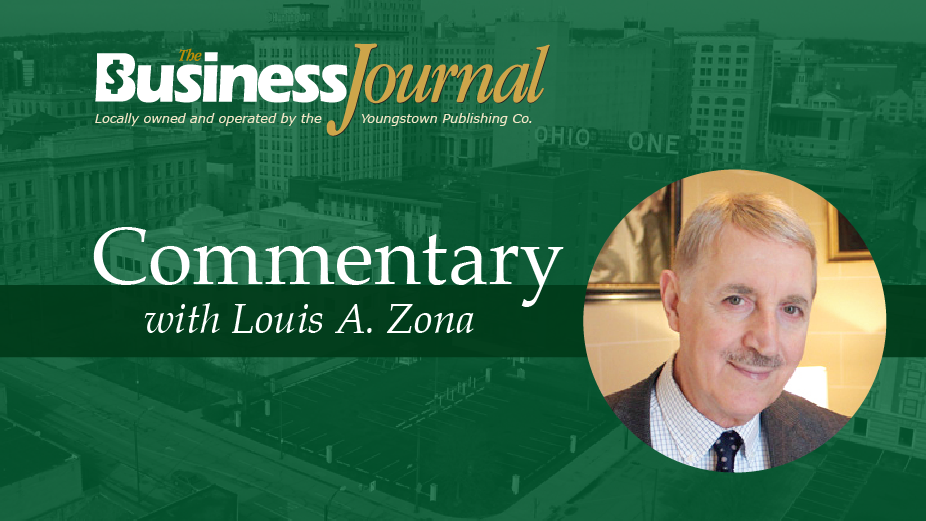By Louis Zona
YOUNGSTOWN, Ohio – With apologies to Charles Dickens, I would argue that it was not the early 1790s but the late 1960s that were the best of times and the worst of times.
Those of us who lived through the 1960s realize that it was a decade of artistic triumphs. It was also a period dominated by war and social challenge. The quagmire that was Vietnam was like the Sword of Damocles that hung over the heads of all of us then of draft age.
The Vietnam War appeared as an unsolvable and dangerous puzzle that ended the careers of many in government and indirectly may have led to the resignation of a United States president.
I got to know the curator of the White House art collection, Rex Scouten, who many years ago gave a tour of the facility to my nephew Nick and me.
The most powerful images that stayed with me were the charred boards on the side of the White House that remained from the British assault from the War of 1812. And, a small office in the lower level of the White House where Lyndon Johnson retreated when the anti-war protestors gathered across the street and chanted louder and louder, “Hey, hey, LBJ. How many kids did you kill today?”
Try as he did, LBJ could not find anywhere in the entire White House to avoid hearing the anti-war chants.
The absolute most exciting event of the entire decade had to have been the moon shot that put American astronauts on our planet’s nearest neighbor. I was attending graduate school at the University of Pittsburgh when it occurred.
To this day, I get a little queasy in the stomach when I recall that evening in 1969 when Neil Armstrong took that first step onto the lunar surface.
Decades later, I got to meet Alan Bean, the fourth human being to walk on the moon. We exhibited his paintings at The Butler that pictured his experiences there. He told us that his footprints could last more than two million years on the surface of the moon and that our cellphones of today have more computing power than the computer in his spacecraft. He also told us that he might have been only the fourth man on the moon but he was definitely the first artist to visit!
While on the subject of negatives that happened in the 1960s, we begin with the assassination of President Kennedy and then his brother Robert F. Kennedy, slain in Los Angeles as he campaigned for president.
Martin Luther King Jr. was also killed during that tumultuous decade. His murder ignited riots in America‘s biggest cities. The so-called king of pop art, Andy Warhol, was also shot by one of the people he identified as his superstars and acted in his underground films.
Warhol recovered and his contribution to American culture cannot be overstated. Paintings, sculpture, photography, film, installations – you name it and Andy had a hand in it. He truly shaped our visual arts culture in the ‘60s.
The popular music of the decade saw the rebirth of rock with the groundbreaking songs of Bob Dylan and bands such as The Beatles, The Rolling Stones, Led Zeppelin, The Doors, Pink Floyd, The Who, Jefferson Airplane and dozens more.
While we watched television shows in the 1950s such as Milton Berle’s “Texaco Star Theater,” and of course “Howdy Doody,” it was the next decade that saw TV come into its own and influence all of our lives.
Not only did we see the assassination of our president but also the killing of his slayer at the hands of Jack Ruby. The Vietnam War became the first televised military action that ultimately led to America pulling out of the conflict.
These and so many other world events, both good and bad, were brought right into our living rooms through the magic of television. The Ed Sullivan Show gave us our first look at the Beatles and the Rolling Stones. It also gave us the brilliance of Leonard Bernstein and Carl Sagan.
The so-called counter-culture flourished with the writings and teachings of Allen Ginsberg, Lawrence Ferlinghetti (who exhibited his paintings at The Butler), Abbie Hoffman, who urged his followers to Steal This Book, and the music of Janis Joplin and Jimi Hendrix.
The 1960s gave us the flower power paintings of Peter Max and the Bull’s eyes, beer cans, maps and the colorful numbers of Jasper Johns. Also the decade gave us the swimming pools of David Hockney and the plaster covered figures of George Segal (come see one at The Butler) and the photo-rich canvases of Robert Rauschenberg. Robert Indiana’s “Love” paintings and sculpture stole the show.
Perhaps the greatest pitcher in the history of baseball, Sandy Koufax, displayed his talent in the ‘60s, as did Johnny Unitas, voted as the greatest player in the first 50 years of the NFL.
We all have heard, “If you can remember the 1960s, you weren’t there.”
The drug culture took hold then and the youth of America became a major part of it. But young people also explored Eastern religions and listened to John Lennon and the Beatles as they explored a maharishi’s teachings and Hare Krishna.
Aspects of the counterculture were free love, long hair, bellbottoms, tie dye, and the most unexpected musical concert in history, Woodstock.
It was a fall night in 1962 at Taggert Stadium where my high school classmates at New Castle High School took on the team from Beaver Falls High School. What made the game so special was that a quarterback by the name of Joe Namath was pitted against us. He was a man among boys and gave my team a drubbing we’ll never forget.
With all the problems that decade was known for, if I had H.G. Wells’ time machine, I’d turn that dial to my very favorite year of all, 1962, and hold on tight!
